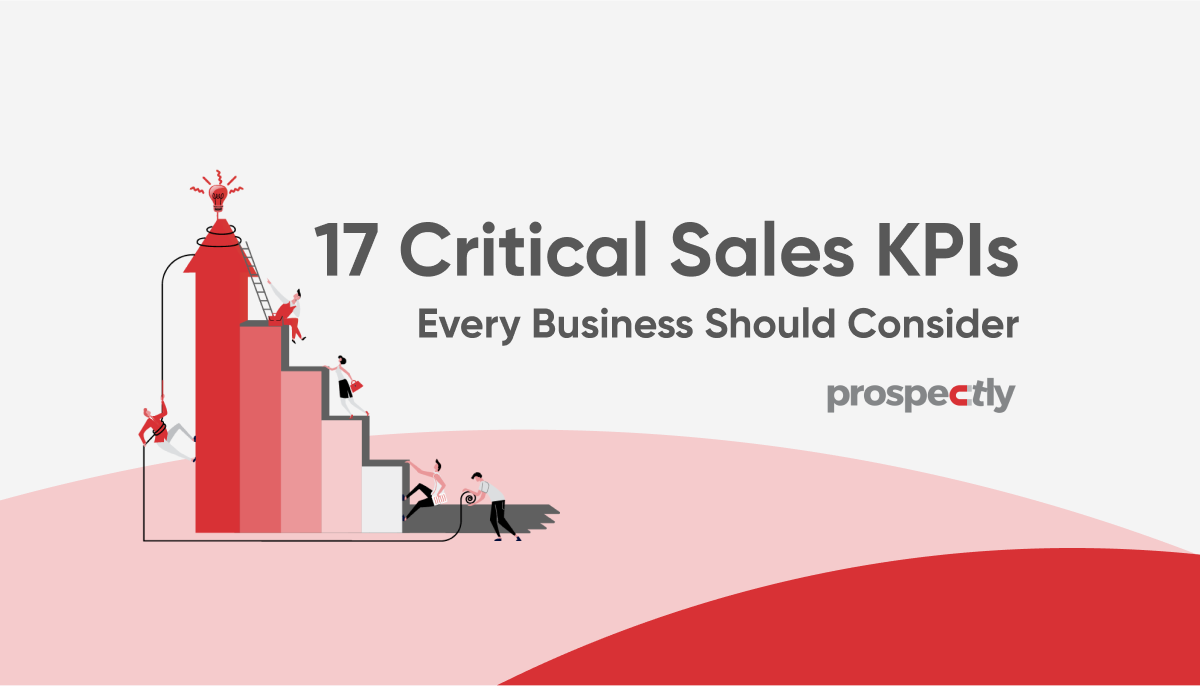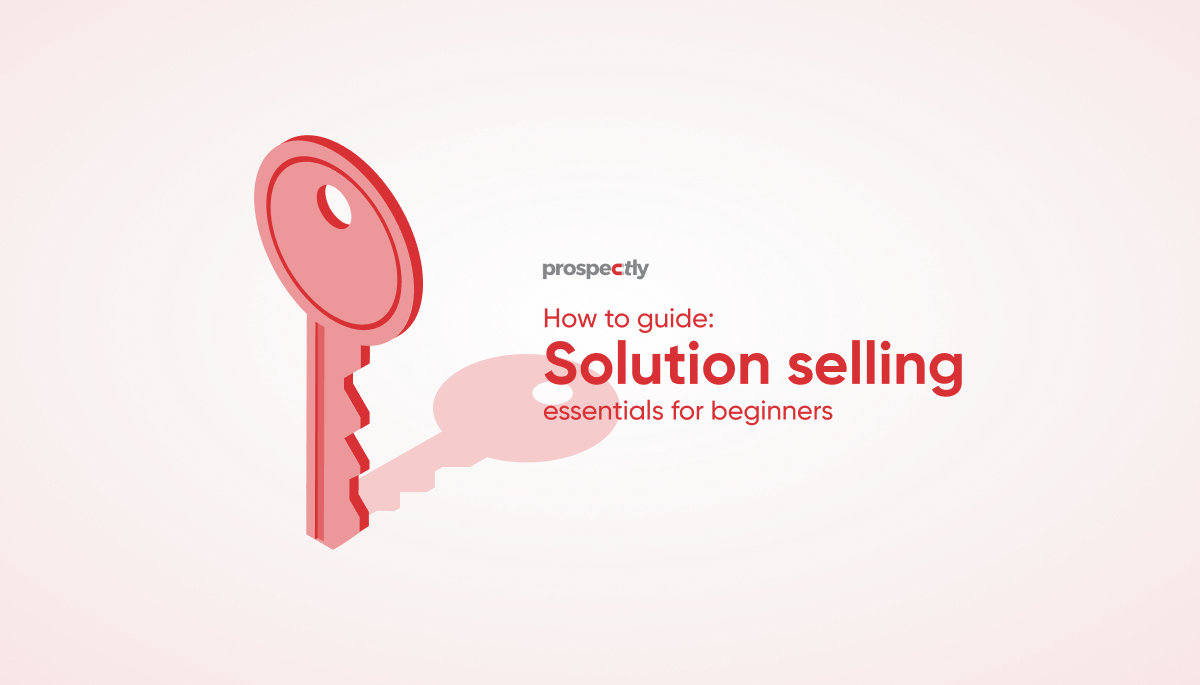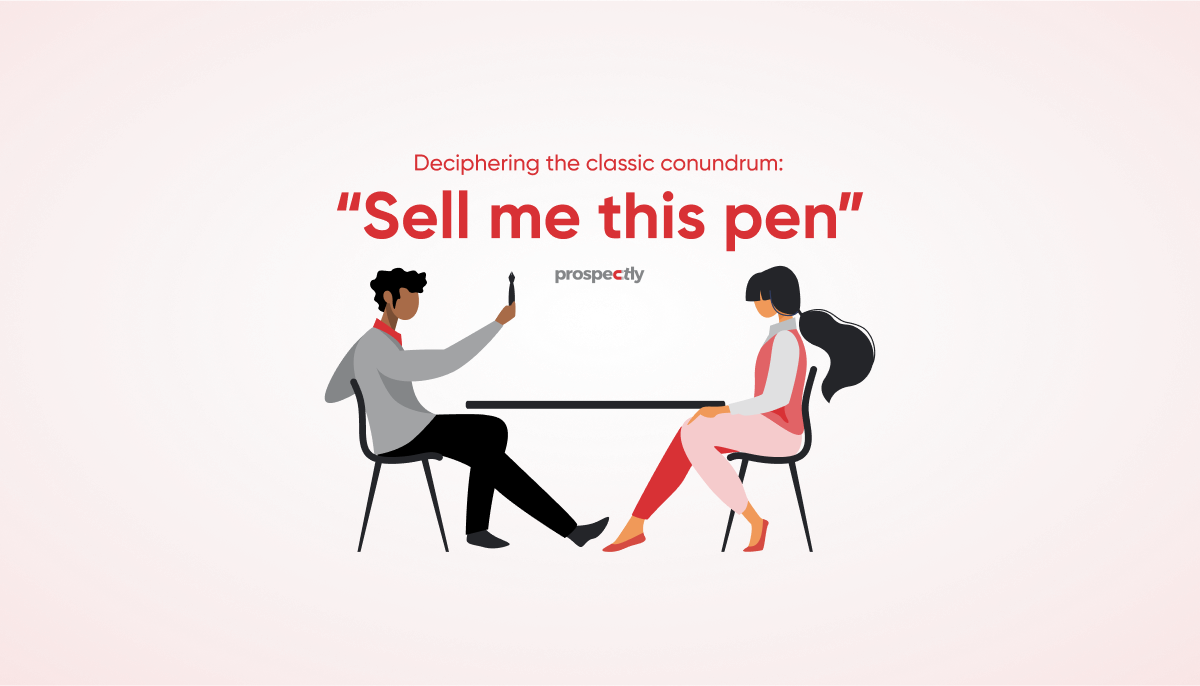Build endearing business relationships with the Sandler sales methodology
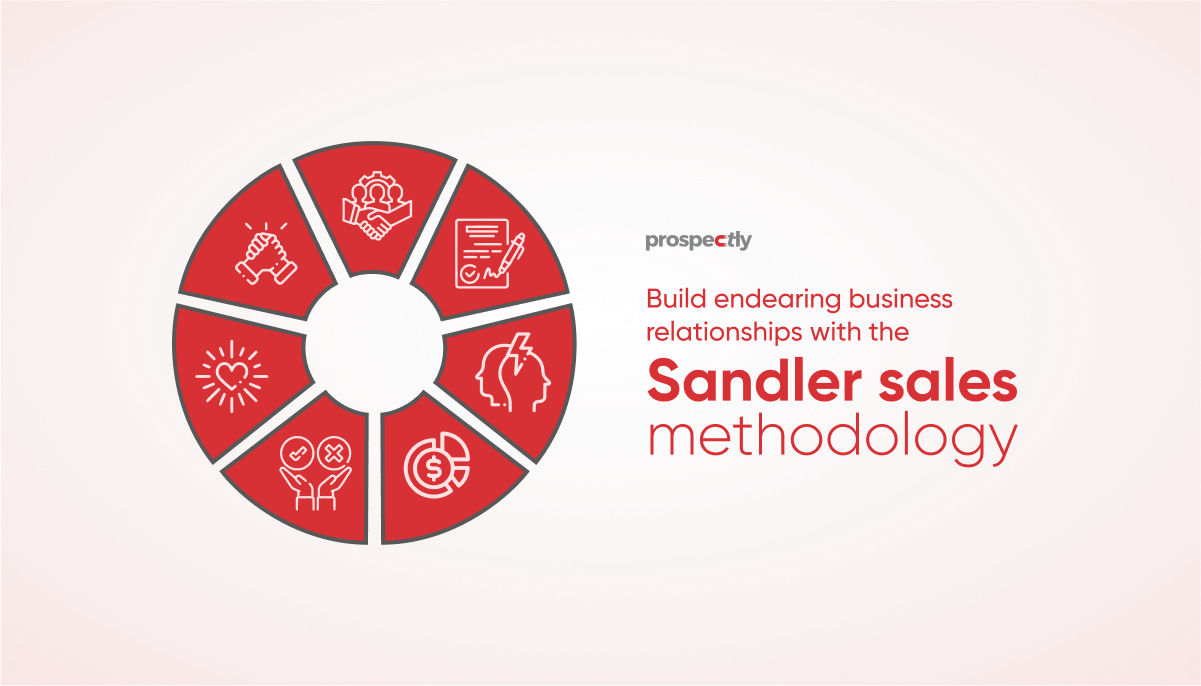
Surviving in the cut-throat sales world requires you to be consistently on top of your game. Every prospect/account is different in sales, and applying the proper sales methodology can help you navigate dynamic sales cycles faster and more efficiently. Our previous blog, 9 Sales methodologies: How to win buyers and influence sales, explored various sales processes that help you improve your win rate. This article will dive deep into the workings of the Sandler sales methodology and how it can help you reach those sales milestones.
Before we get down to the nitty-gritty, let’s define this compelling sales technique.
What is the Sandler sales methodology?
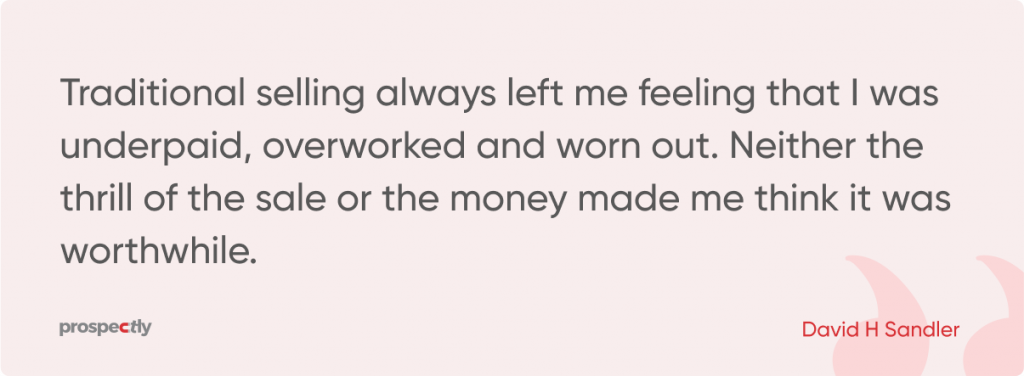
The Sandler selling methodology was developed in 1967 by the founder of Sandler Training, David Sandler. What differentiates it from other sales methods is that it celebrates the consultative sales approach. This technique encourages salespeople to qualify prospects by asking probing questions which helps them validate the opportunity during the early stages of the sales process. Additionally, the buyer feels heard and in control of the buying cycle, which is critical for building sustainable business relationships.
However, if you are in sales, you must have come across multiple sales methodologies that guarantee increased revenue. So, what is so special about this particular technique?
Keep reading to find out.
Why is the Sandler selling system important in sales?

It is worth noting that many successful sales reps still practice a 50-year methodology in a high-powered environment like sales. Yet, they do have solid reasons for their faith in this method.
- Sandler sales technique has proven success rates. 88% of salespeople have enhanced their sales strategy with Sandler, and 50% more have hit their sales quota than those that haven’t applied this technique.
- It helps build trust between sales professionals and their prospects, which creates a stellar brand reputation and augments repeat sales.
- Instead of pushing your product to every prospect, this system trains you to find the ideal buyer for your offerings. It convinces the customer that your product can solve their pain points and that addressing their requirements is a high priority for both parties.
- Qualifying prospects early in the sales cycle helps salespeople remove objections, focus only on interested parties, and save time in last-minute negotiations.
- It helps improve the deal size, shorten the sales cycle, clean up the sales pipeline, enhance sales forecasting, and maintain price margins.
Now that we have defined and discussed the importance of this selling technique, it’s time to deconstruct the Sandler sales system.
The 3 stages of the Sandler sales process
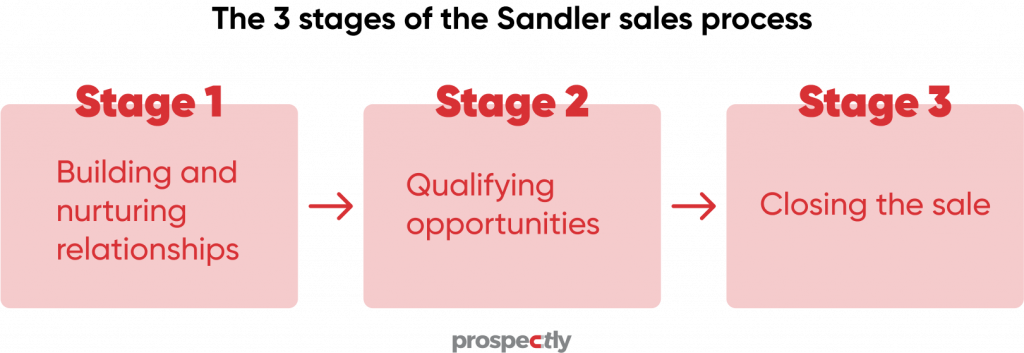
According to sandler.com, while different sales methodologies train you to get better at playing the sales game, the Sandler method utilizes three key stages that keep you from playing any such game. These three primary stages are-
Building and nurturing relationships
The Sandler sales methodology stresses on fostering long-term relationships. You can achieve this by-
- Moving beyond the manipulations of the buyer-seller dance and focusing on building rapport with clients
- Being clear about expectations
- Gathering requirements through incisive questions
Qualifying opportunities
This stage involves finding the right fit for your product, not the other way around. You decide whether your offering solves your prospect’s requirement and qualifies the buyer by understanding their budget, timeline, and buying authority.
Closing the sale
After carefully screening the prospect, you address their concerns via a no-pressure presentation. Once the buyer agrees to the deal, you confirm the agreement and set post-sales service expectations.
The three stages discussed here are further segmented into the seven compartments of the Sandler submarine. But why submarine and not any other battleship?
Continue reading.
The Sandler Submarine and its 7 compartments

David Sandler was a World War II movie aficionado, and this sales system was inspired by his fascination for submarines.
How is the submarine related to Sandler sales method?
- David Sandler designed the Sandler method in line with the structure of a sub. When under attack, the submarine crew moves through each compartment closing behind the door to previous compartments to avoid flooding. Keeping with this rationale, the Sandler technique guides salespeople to move through various sales cycle stages to prevent setbacks and arrive successfully at the closure stage.
- Submarines operate in stealth mode as they run silently underwater. Sellers following the Sandler method stick to the same ideology of working hard with resilience, barring the usual pomp and show of the sales business.
- Like the submarine crew, salespeople in this technique must secure each sales cycle stage before moving on to the next one. Going back may result in losing the deal, which for a submarine sailor equates with sinking the sub and losing lives.
- Submarine sailors are one of the most courageous and disciplined people. Similarly, Sandler sales enthusiasts must brave the general fear and insecurity around losing out on multiple opportunities during the initial qualification process to get to their ultimate goal of harnessing a few but successful future relationships.
- Sandler followers base their decision on objectivity and logic rather than on their gut instinct and emotional state.
What are the 7 compartments of the Sandler submarine?
The seven compartments of the Sandler submarine represent the seven principles of the Sandler sales methodology.
1. Practise rapport building
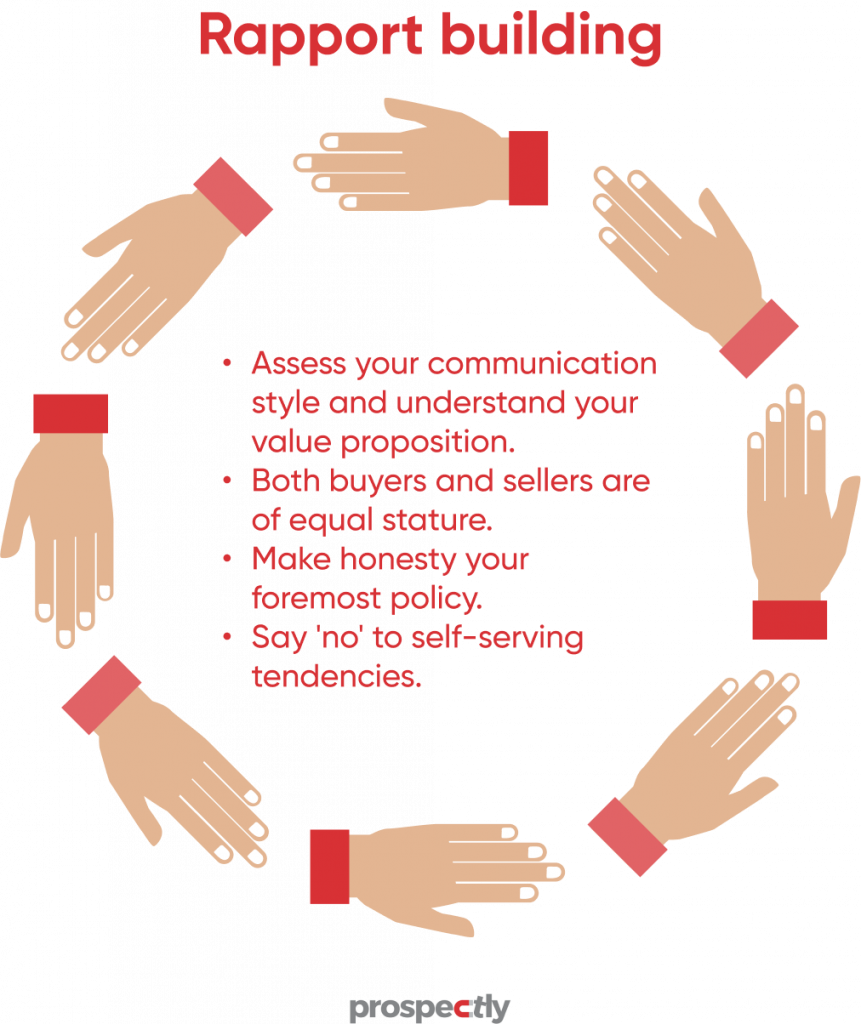
Human beings have the pre-conceived notion that all salespeople are pushy and self-serving. Hence they instinctively put up their defenses while communicating with a salesperson. This principle suggests that you defy general perceptions and concentrate your efforts on bonding with your prospect. Building rapport helps you switch from transactional selling to a trust-building approach. Here are a few sandler sales tips to support this principle.
- Assess your communication style and understand your value proposition – Before you devise a strategy to interact with your prospects, look inwards and analyze your sales approach. It is only natural for you to treat your prospects like you expect them to treat you. But, every prospect is different, and you need to adapt your communication style to fit every personality type. Moreover, it is essential to know your worth and what you bring to the table.
- Know that both buyers and sellers are of equal stature – It is critical to comprehend that being on the selling side does not undermine your value. Consider yourself a skilled interviewer whose sole intention is to help the customer. Project yourself as an expert in your field by asking intelligent questions that make the prospect comfortable sharing their opinions.
- Make honesty your foremost policy – Being transparent with your prospect and showing your vulnerabilities will help them put their guard down. This strategy disarms the prospect and offers them the liberty to share their actual intentions.
- Do not give in to self-serving tendencies – Be extremely careful not to appear self-involved in front of your prospect. Pay attention to what they have to say and understand their concerns in detail. When it comes to existing clients, check in with them now and then instead of calling them only for up-selling opportunities.
2. Initiate up-front contracts
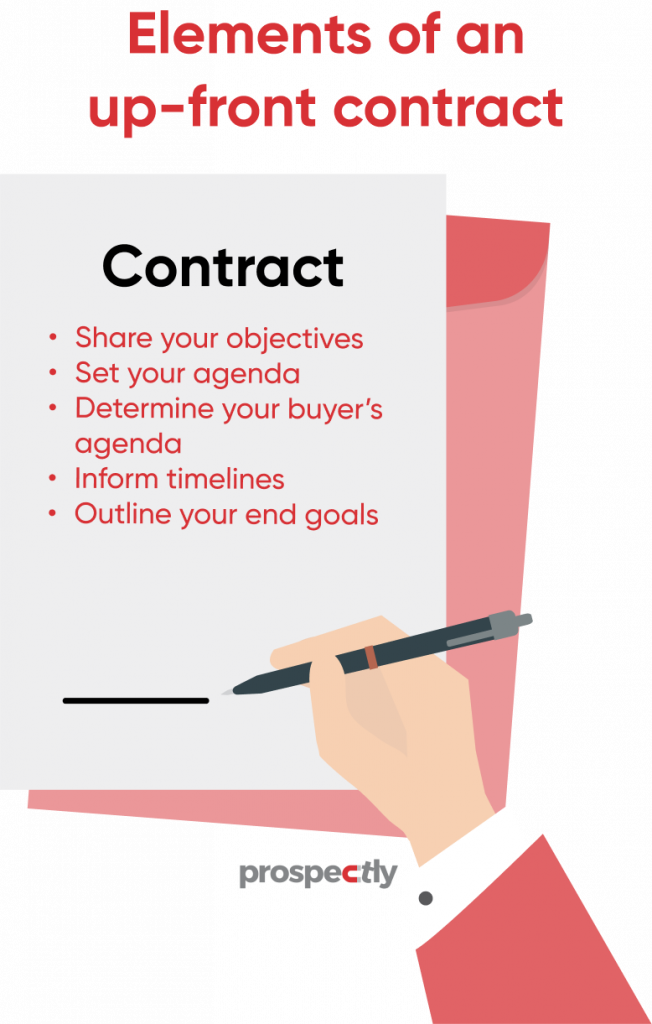
Setting clear ground rules is a critical component of the Sandler selling methodology. This alerts both the buyer and seller to know what to expect from the sales process. Adopting this approach will greet your prospect with a welcome surprise, help establish behavioral boundaries and determine the steps to manage set expectations.
Ensure your upfront contracts highlight the following aspects–
- Share your objectives – Disclose what you expect to establish in the meeting. It also helps to ask the prospect what they expect from a discussion.
- Set your agenda – Inform your prospect of what you plan to do before, during, and after the meeting.
- Determine your buyer’s agenda – Anticipate what your prospect will be doing before, during, and after the meeting.
- Inform timelines – Respecting your buyer’s time and getting their approval on the meeting time frame is paramount.
- Outline your end goals – Set and disclose your goals for the meeting – topics covered, ensuing steps post-meeting, etc.
For in-depth information on establishing your up-front contracts, listen to this episode from Selling the Sandler Way Podcast hosted by Dave Mattson, the president and CEO of Sandler Training.
3. Unveil your buyer’s pain
This step initiates the qualification stage. Pain is an extreme emotion that motivates people to drastically change their lives. Make it your goal to first determine if your prospect has a concern that you could address and then uncover this underlying pain.
But how do you do that? Follow the questions outlined in the Sandler Pain Funnel, which is a series of open-ended questions designed to uncover your prospect’s requirements. This step may occur over a series of email exchanges or phone calls.
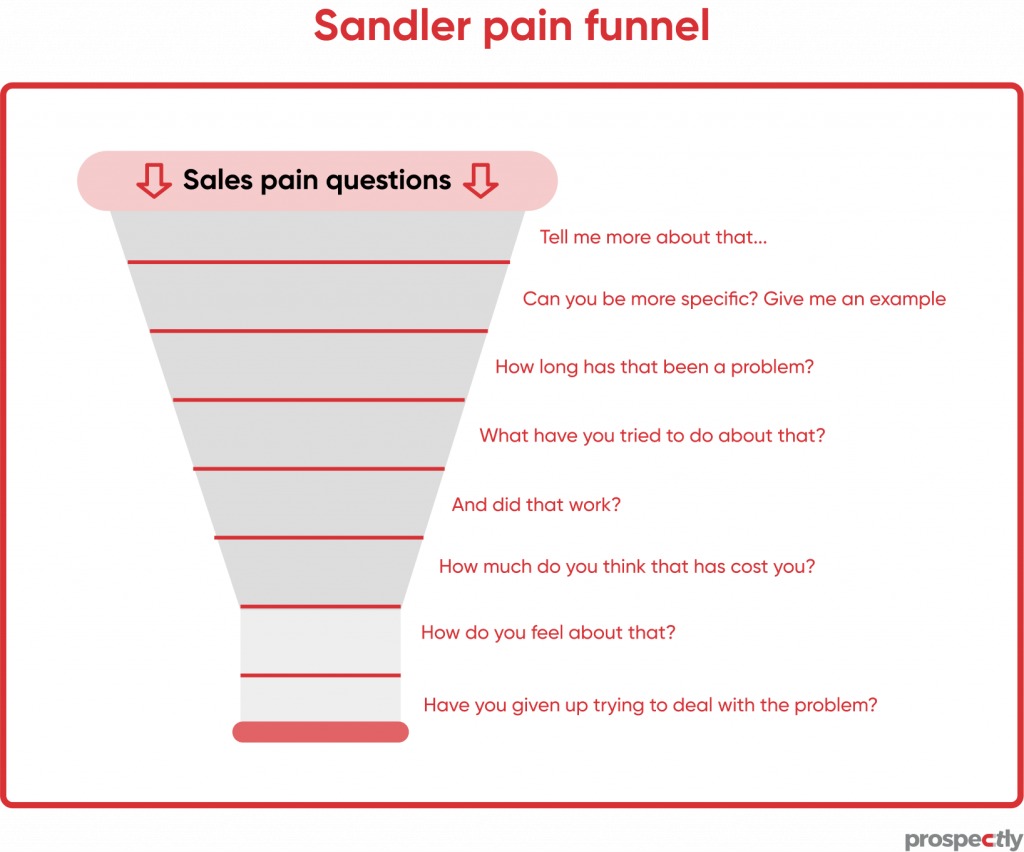
4. Ascertain your prospect’s budget
Straightening out budgetary constraints in the early stages is beneficial for buyers and sellers alike. It allows prospects to move along the sales process without feeling obliged to sellers and helps the salesperson to customize a proposal based on the allotted budget.
If you often hesitate to bring up money during your first sales call, the results from this experiment should put your mind at ease.
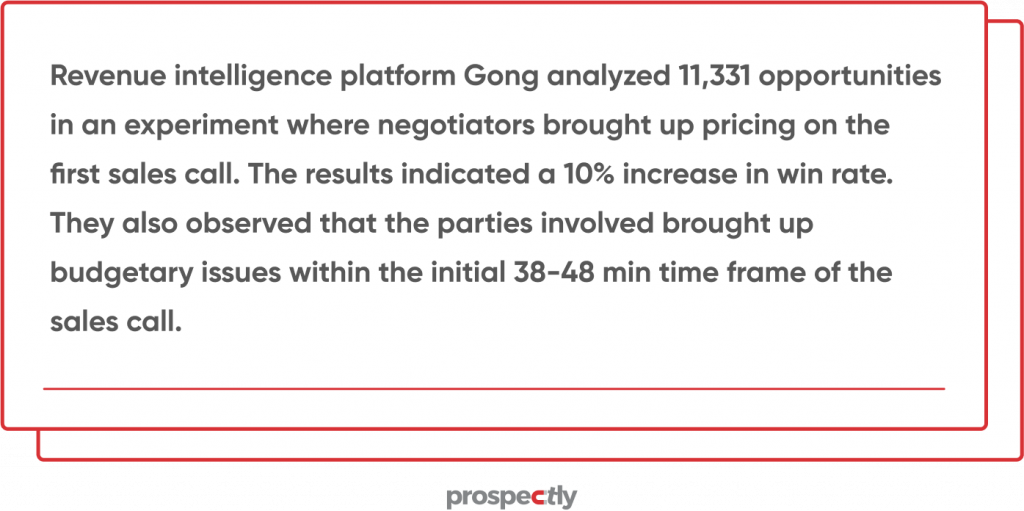
As indicated in this study, discussing the prospect’s budget within the initial 38 mins of the first sales call increases your chances of closing the deal. But how do you do that? Take a look at the sample questionnaire and customize it based on your requirements.
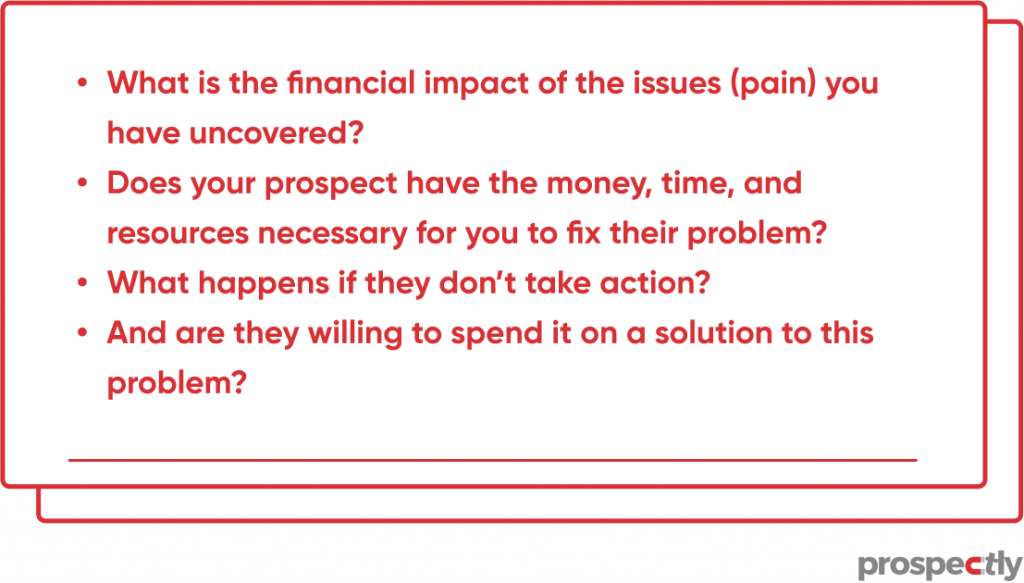
When following the Sandler sales technique, it is critical to go through this step before moving on to your presentation/proposal.
5. Figure out your prospect’s decision-making process

Now that you have discovered your prospect’s objective, pain points, and budget, it is time to work out the details of their decision-making process. To understand this, you can use questions like the one mentioned below.
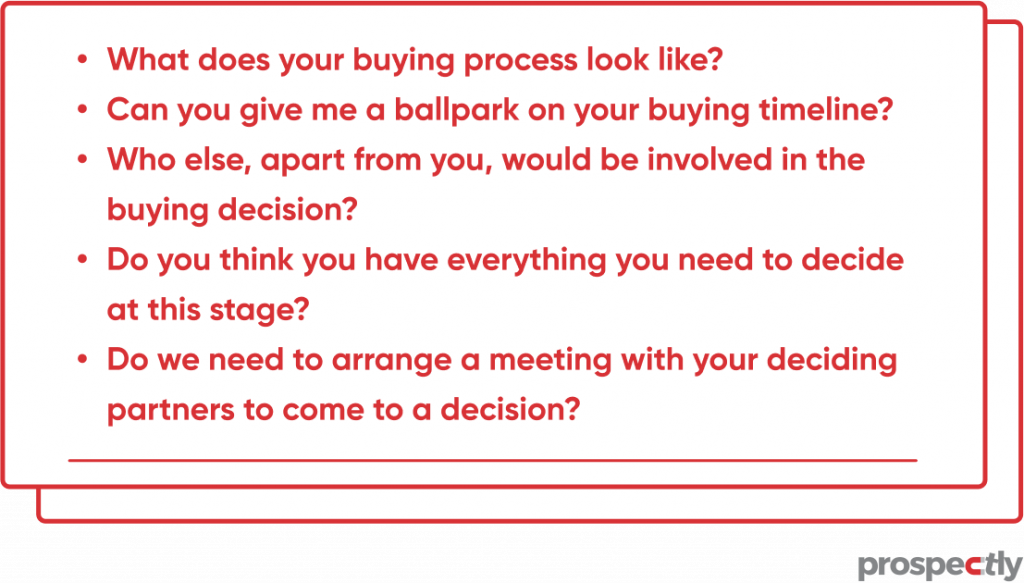
It would not be ideal to move further into your Sandler submarine should you be unhappy with the answers to these questions. It becomes much easier for you to draft a suitable proposal that is more likely to be accepted when you are aware of the who, where, when, what, and how of their decision-making process.
6. Fulfill your buyer’s need
This step is all about delivering a tailored solution that drove the buyer to your door and fulfills his needs. If you have ardently followed the previous principles of the Sandler sales program, this is how this stage should appear.
- You are delivering a no-pressure presentation with the sole desire of solving your prospect’s pain points.
- Depending on your prospect company’s regulations, an informal discussion can replace the presentation where you are just re-iterating set expectations.
- The buyer will decide, one way or another, without dillydallying as there are no hidden objections at this point.
- If this step does not feel a lot smoother than your previous communications, know that you may have missed an essential element of the Sandler selling method.
7. Finish strong with a suitable post-sell conversation
Closing the sale should not end your communication with the buyer. Prepare them for the transition that’s about to occur and ensure a smooth onboarding experience to prevent buyer’s remorse. Standing by their side at this critical juncture will open up future opportunities like referrals or repeat business.
Asking questions similar to the ones mentioned below will make them feel a gratifying sense of time and money well-spent.
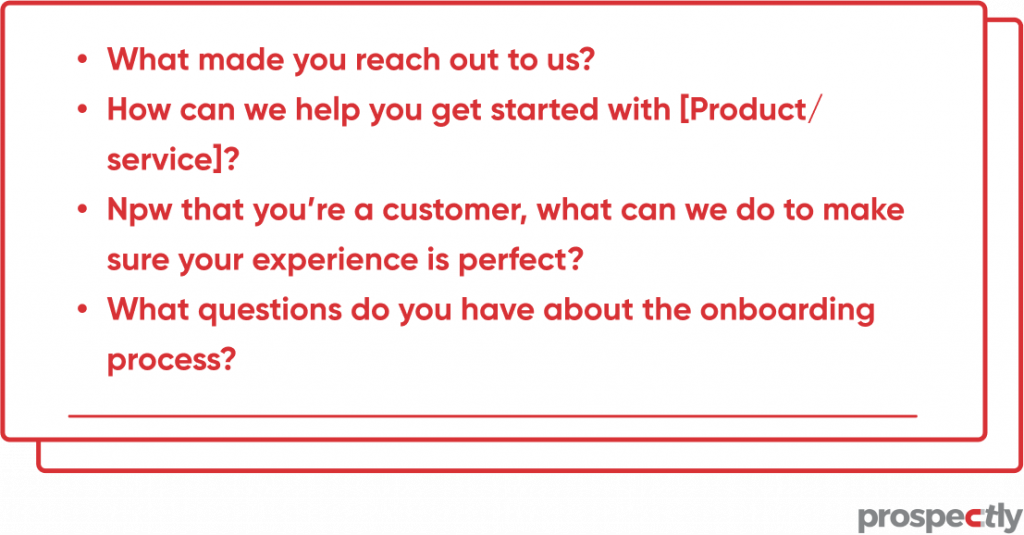
This concludes the seven core principles of the Sandler sales methodology. You could also look at the following video for additional help in incorporating this sales technique into your sales strategy.
Win your prospect to win the deal

The Sandler method is just one of the many sales methodologies that help you sell more efficiently. However, it is a time-tested technique to build a deeper connection with your prospects and nurture the buyer-seller relationship based on mutual trust and respect. Using this method sets you apart from the average salesperson as it focuses primarily on prospect qualification than pushing your agenda.
Trying to find the ideal fit for your offering does bring in the additional risk of closing fewer sales. Hence, the Sandler sales methodology is found to be effective mostly in complex B2B sales where it is less about following the law of averages and more about investing time with qualified buyers But, ultimately, if you can win your prospect, winning deals become a much more fulfilling experience.
Related: 11 guiding principles to a bulletproof sales negotiation strategy
